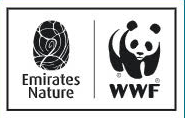Phil Dunn talks about his year-long mission to eat food he has grown himself in Dubai Sustainable City, and how he generates ZERO food waste.
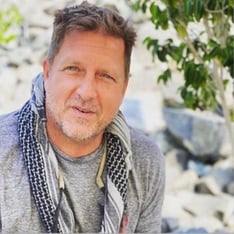 This Ramadan, we shine the spotlight on real people who are tackling food waste in their personal and professional lives. We’ve spoken to the deputy GM of an organic farm, mums tackling food waste in their kitchens, a vegan transforming the way we eat, and now, a landscape architect exploring the extent to which we can grow our own food in urban communities.
This Ramadan, we shine the spotlight on real people who are tackling food waste in their personal and professional lives. We’ve spoken to the deputy GM of an organic farm, mums tackling food waste in their kitchens, a vegan transforming the way we eat, and now, a landscape architect exploring the extent to which we can grow our own food in urban communities.
We hope these stories inspire you to Shop Smarter, Cook Smarter and Eat Smarter so that you too can #SaveOneThird of food from going waste.
Emirates Nature-WWF: Tell us about The Sustainable Human Project and why you are growing your own food.
Phil Dunn: The Sustainable Human Project started as a mixture of a personal challenge and the need to create awareness about local food production and food security in the UAE.
I wanted to do something exceptional as I cruise into my 50th year. As the landscape architect behind Dubai Sustainable City, I also wanted to highlight what this landscape can do. It has been designed not just to be pretty but also to be productive – to grow food, create habitat and create a micro climate. So, I decided to go 365 days eating only food grown in Dubai Sustainable City. What I can’t grow, I barter for.
The journey has been an examination of not only the environment side (the growing side), but also of the social side. To grow a community by growing together, literally.
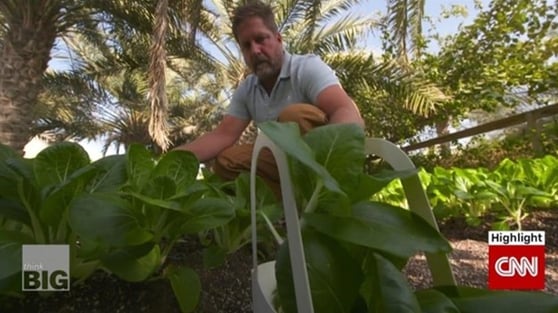
Emirates Nature-WWF: How, and where, did you grow all your food?
There is a green strip that runs through Sustainable City and is affectionately known as ‘the farm’. It provides the infrastructure, like urban farming plots, that residents share and can use to grow their own food through a farming program.
The urban farming lots are literally in front of my gate. There’s also a green house, a farm for leafy greens and an aquaponics system here that is mainly for education but which I can access for fish.
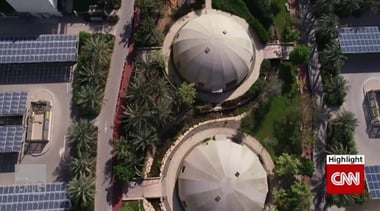 The greenhouse is open on a commercial basis. Each resident gets a certain number of free pots a month. But in my case, I’m making some trades with the guy who runs the place to help me grow more food for this experiment, to see if it can be done for one whole year.
The greenhouse is open on a commercial basis. Each resident gets a certain number of free pots a month. But in my case, I’m making some trades with the guy who runs the place to help me grow more food for this experiment, to see if it can be done for one whole year.
I also keep chickens. But this is for eggs, I don’t actually eat the chickens! I get close an egg or two per day.
Emirates Nature-WWF: You are about half way through the year-long mission. How has the journey been so far?
Phil: I’m lucky I have access to space to grow the food I need. When I started in November 2020, it was quite a challenge because I had to start from scratch.
The infrastructure and basic stuff required like gardens and plants that I would need weren’t in place yet. Since that’s happened, it’s gotten a lot easier. I’ve settled into a rhythm.
But summer has come. The weather is too hot for plants to grow outside. I’m entering a new phase of trying to figure out what to do for the summertime, like fermenting food to preserve all the garden abundance I have now.
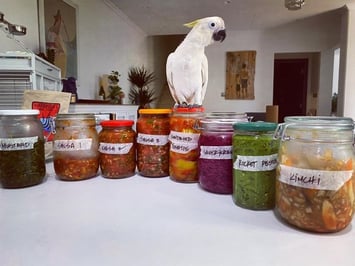 Emirates Nature-WWF: What does a typical meal look like?
Emirates Nature-WWF: What does a typical meal look like?
Phil: I get about an egg a day and eat a lot from my garden. At the moment we are harvesting beets, cabbage, carrots and rocket and planting summer plants, sweet potatoes, melons, peppers and chili.
There are also a lot of trees in Sustainable City that produce, like moringa. It’s super nutritious. I eat a lot of moringa leaves, sweet potato leaves, lettuce and leafy greens from the hydroponics and greenhouses. I don’t eat the fish very often. They seem more like pets to me than a food source. But I do eat them every once in a while.
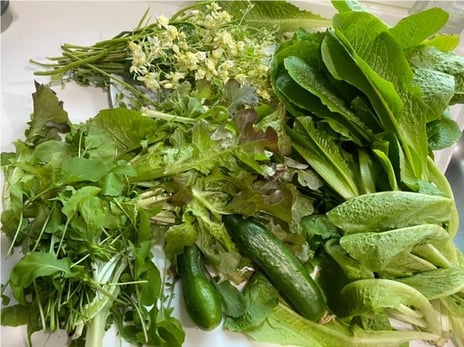 Whatever I can’t grow, I trade for with the local residents. One of the key things I trade for is rice and olive oil. Some people bring me baked goods once in a while which is nice. I had a nice sourdough loaf of bread about 3 weeks ago, and a nice apple crumble not so long ago. When it does come, it’s such a treat and such a break to the monotony of my diet.
Whatever I can’t grow, I trade for with the local residents. One of the key things I trade for is rice and olive oil. Some people bring me baked goods once in a while which is nice. I had a nice sourdough loaf of bread about 3 weeks ago, and a nice apple crumble not so long ago. When it does come, it’s such a treat and such a break to the monotony of my diet.
I also have someone who drops off their compost and food scraps to feed my chicken
A real world challenge is how to function in your normal world with a full time job, family, pets and whatever else you’re responsible for, and at the same time try to feed yourself. That’s been an experiment.
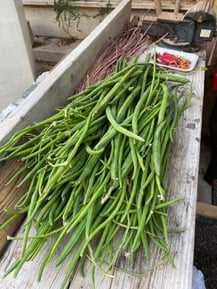
Emirates Nature-WWF: It sounds like the more social you are, the more benefits to your diet?
Phil: Certainly, the more people get involved, the easier it is.
I’m really finding this to be a project that I can’t do by myself. It takes a whole village to feed somebody.
It’s given me some insight into how people would have operated in the not so distant past where you had to barter for what you needed. Our world represented a bond – if you made an agreement with someone you had to stick with it. For example, if I offer to make someone a birdhouse for a bag of rice, it’s really important that we stick to that deal because I have to plan what I’m eating several weeks in advance.
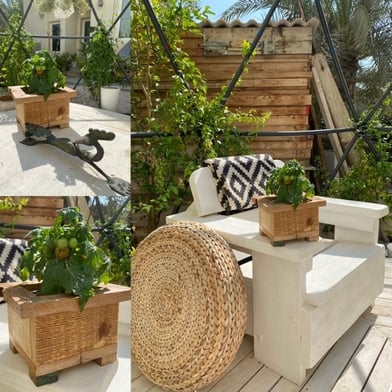 Emirates Nature-WWF: How has this project impacted your relationship with food?
Emirates Nature-WWF: How has this project impacted your relationship with food?
Phil: I used to say I was a meat eater of note. Now I eat what I grow, which is mostly vegetables. I had the knowledge that a vegetarian lifestyle is certainly better for the planet and can make a difference to our health. I’ve partnered with Chiron Clinic to get health checks and see exactly what difference it’s made.
I always had a great relationship with plants. But my relationship with food has changed greatly. I’ve come to appreciate of how much time and energy it takes to grow it. My respect for farmers has massively changed.
My relationship with food has also changed at a social level. Locally grown food can bring a community together.
Lots of people would love to participate in growing their own food. The infrastructure is probably not easily available where they live now, but it could be. I think this is really important for planning future communities and making them more socially inclusive.
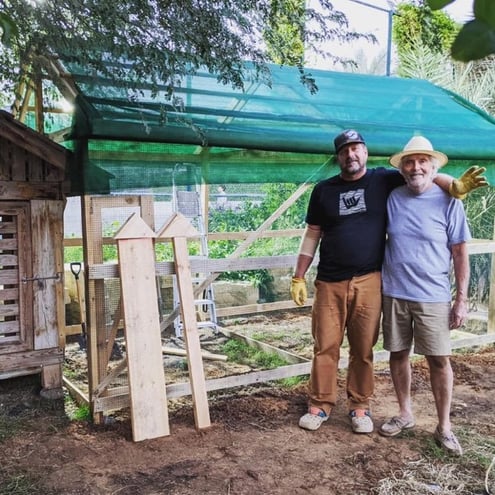
Emirates Nature-WWF: How much food waste do you create now?
I have zero food waste now because it either goes to feed my chicken or it goes into my bokashi bin for composting. This project has drastically changed my food waste because every drop of food for me is precious.
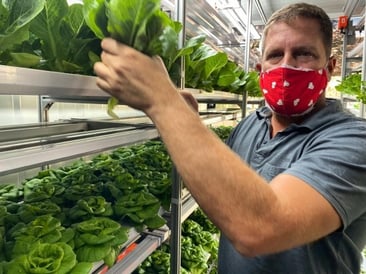 The composting system I use, Bokashi, is applicable for any type of living, apartment villa whatever is. It’s a simple system – you throw the food waste in a bucket, add a little bacteria to eat the food and use the liquid that comes out the bottom in your house plants. If you have the space to grow, you can use the digested food inside the bucket to landscape your garden or hopefully, to grow your own food.
The composting system I use, Bokashi, is applicable for any type of living, apartment villa whatever is. It’s a simple system – you throw the food waste in a bucket, add a little bacteria to eat the food and use the liquid that comes out the bottom in your house plants. If you have the space to grow, you can use the digested food inside the bucket to landscape your garden or hopefully, to grow your own food.
Emirates Nature-WWF: What do you hope to achieve with this project?
Phil: This project is about giving people the confidence, inspiration and support to grow their own food. It’s an exploration of food security and empowers people at the local level to make a difference at the national level.
I want people to know that it’s completely possible to grow their own food in the UAE, in this climate. You can do it. Just start, even if you don’t have a plan. And if you start, it evolves into something.
To know more and follow Phil’s journey, follow him on Instagram at @TheSustainableHumanProject
For more Agent of Change stories, subscribe to our blog or follow us on Instagram @EWS_WWF






